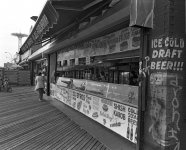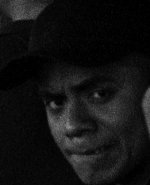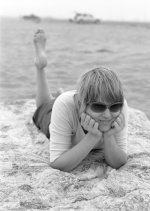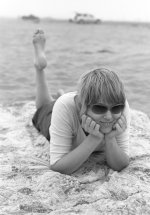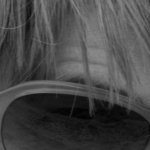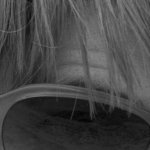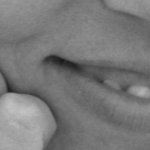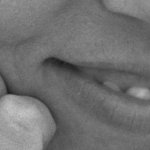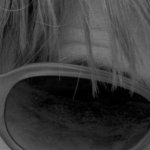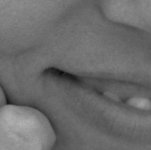mfogiel
Veteran
Since I happen to own both of these scanners, and have no vested interest to pretend one or another is better, I thought it could be useful to make a quick test for the benefit of those who are undecided which scanner to buy.
The test hits the extremes: a contrasty Velvia 100F slide, and a traditional silver halide negative. In the first case Nikon should excel because of its capacity to extract shadow detail, in the second case Epson should excel because of its diffuse light source.
All scans have been done with Vuescan software and identical settings. The Doug's MF glass holder (calibrated) has been used on the Epson, and the same glasss has also been used (after adaptation) on the Nikon MF holder.
Both scanners worked at 4000 DPI - this is the max setting on Nikon, and although this is not the "native" resolution on the Epson, from experience I can tell you it doesn't make a lot of difference. For in depth explanation, please look up the photo-i site and their forums.
A double pass has been performed on the Velvia slide to get better shadow detail, otherwise there has been no sharpening or other manipulation. I have adjusted brightness and contrast on the last B&W comparison image, to make it easier to discern differences in resolution.
You can copy the 100% crops, and manipulate them on your computers to get the feel of the type of results you would obtain.
Besides what you will see yourselves,as far as the speed is concerned, I have to note, that on my computer (an IMAC 17" with 1,5 GB RAM and CS2 working under Windows ) the colour scan, from the hit of the "enter" button for the beginning of the scan till the moment a tiff file (452MB) appeared on my screen in PS took:
- 30 min 40 sec with Epson V750
- 17 min 50 sec with the Nikon CS9000.
Here are the images, Velvia 100F first:
V750 entire shot:
http://www.flickr.com/photo_zoom.gne?id=1195860909&size=l
CS9000 entire shot:
http://www.flickr.com/photo_zoom.gne?id=1196119071&size=l
V750 100% crop:
http://www.flickr.com/photo_zoom.gne?id=1195867753&size=l
CS9000 100% crop:
http://www.flickr.com/photo_zoom.gne?id=1196996834&size=l
and a face to face comparison:
http://www.flickr.com/photo_zoom.gne?id=1197126130&size=o
now the Tmax 400 shots:
V750 entire shot:
http://www.flickr.com/photo_zoom.gne?id=1197148700&size=l
CS9000 entire shot:
http://www.flickr.com/photo_zoom.gne?id=1197159998&size=l
V750 100% crop:
http://www.flickr.com/photo_zoom.gne?id=1197152876&size=l
cs9000 100% crop:
http://www.flickr.com/photo_zoom.gne?id=1197167232&size=l
and a face to face comparison:
http://www.flickr.com/photo_zoom.gne?id=1196349233&size=o
I leave it with you to decide what is the tool you would prefer to use.
The test hits the extremes: a contrasty Velvia 100F slide, and a traditional silver halide negative. In the first case Nikon should excel because of its capacity to extract shadow detail, in the second case Epson should excel because of its diffuse light source.
All scans have been done with Vuescan software and identical settings. The Doug's MF glass holder (calibrated) has been used on the Epson, and the same glasss has also been used (after adaptation) on the Nikon MF holder.
Both scanners worked at 4000 DPI - this is the max setting on Nikon, and although this is not the "native" resolution on the Epson, from experience I can tell you it doesn't make a lot of difference. For in depth explanation, please look up the photo-i site and their forums.
A double pass has been performed on the Velvia slide to get better shadow detail, otherwise there has been no sharpening or other manipulation. I have adjusted brightness and contrast on the last B&W comparison image, to make it easier to discern differences in resolution.
You can copy the 100% crops, and manipulate them on your computers to get the feel of the type of results you would obtain.
Besides what you will see yourselves,as far as the speed is concerned, I have to note, that on my computer (an IMAC 17" with 1,5 GB RAM and CS2 working under Windows ) the colour scan, from the hit of the "enter" button for the beginning of the scan till the moment a tiff file (452MB) appeared on my screen in PS took:
- 30 min 40 sec with Epson V750
- 17 min 50 sec with the Nikon CS9000.
Here are the images, Velvia 100F first:
V750 entire shot:
http://www.flickr.com/photo_zoom.gne?id=1195860909&size=l
CS9000 entire shot:
http://www.flickr.com/photo_zoom.gne?id=1196119071&size=l
V750 100% crop:
http://www.flickr.com/photo_zoom.gne?id=1195867753&size=l
CS9000 100% crop:
http://www.flickr.com/photo_zoom.gne?id=1196996834&size=l
and a face to face comparison:
http://www.flickr.com/photo_zoom.gne?id=1197126130&size=o
now the Tmax 400 shots:
V750 entire shot:
http://www.flickr.com/photo_zoom.gne?id=1197148700&size=l
CS9000 entire shot:
http://www.flickr.com/photo_zoom.gne?id=1197159998&size=l
V750 100% crop:
http://www.flickr.com/photo_zoom.gne?id=1197152876&size=l
cs9000 100% crop:
http://www.flickr.com/photo_zoom.gne?id=1197167232&size=l
and a face to face comparison:
http://www.flickr.com/photo_zoom.gne?id=1196349233&size=o
I leave it with you to decide what is the tool you would prefer to use.


